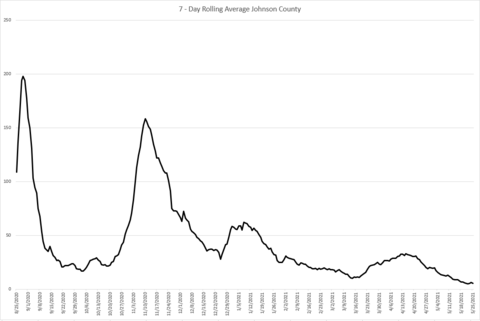Dear Parents and Family,
Your student received this earlier today.
Publishing Note
With the number of COVID-19 cases in our community declining and vaccine availability dramatically increasing, the University of Iowa will transition from sending three COVID-19 updates a week to providing regular updates in your IowaNow emails. Beginning the week of May 31, the number of self-reported cases of COVID-19 will be published on the university’s coronavirus website each Wednesday and shared along with any additional updates or policy changes in your Thursday Iowa Now email.
We will continue to publish the news and updates shared with campus on coronavirus.uiowa.edu.
Mental Health Update: understanding how you may be feeling
A key component in coping with emotions is being able to label them. You may be feeling a variety of emotions right now. The most common way we frame how we are feeling is depressed and/or anxious. This can be true for some of us, but for others there may be better ways to describe how we are feeling:
- Languishing: An absence of feeling well or having well-being. Not depressed, but not feeling good. Not anxious, but stressed. Usually a lack of focus and feeling blah. Taking time away from work but not really feeling better. Making your way through the day a bit muddled or a bit foggy.
- Emotional exhaustion: Feeling overwhelmed, mentally tired, having difficulty concentrating, and feeling “at capacity” with most things. Just not having the energy to tackle one more thing, bear one more problem, or recover from one more slight or incident of discrimination or
- Burnout: Feeling depleted, cynical, not caring, and having reduced efficiency with work. Chronically feeling stressed,overwhelmed, and an overall negative mind-set, usually with work.
- Acedia: Bored, fearful, isolated, uncertain, and listless. Spending a lot of time on social media but not really reading anything. Wanting to go outdoors, but just not finding the time to do it. Wanting something, but just not getting yourself to it.
What can you do if you are feeling any of these emotions? Seek out support and share your struggles with others to find out others struggle, too, and remember you are not alone.
- Set boundaries around the demands on your time and energy and let go of the “cape” sometimes so you do not have function like a “superhero” every hour of everyday.
- Focus on small joys when these emotions happen so you do not lose sight of the positives that still occur every day.
- Limit your exposure to social media.
- Be sure to be as physical as possible each day by exercising or simply getting up and moving around at least once each hour of the work day.
- Lean into braveness and seek assistance when you need it, whether from a mental health professional, a clergy member, a coach, or a trusted friend.
Campus Operations Update
The university continues to monitor self-reported COVID-19 testing data on campus, while also tracking state, region, and national COVID-19 infection rates.

University of Iowa Self-Reported COVID-19 Testing
These data reflect new cases since May 24, 2021.
The University of Iowa has published an updated snapshot of self-reported positive COVID-19 tests from faculty, staff, and students.
Number of self-reported cases of COVID-19:
Students
- New cases: 0
- Total cases: 3,192
Employees
- New cases: 2
- Total cases: 501
These numbers reflect only self-reported positive or presumed positive COVID-19 tests from UI faculty, staff, and students on the academic campus since Aug. 18, 2020. These data will not match data reported by UI Hospitals & Clinics or by the Iowa Department of Public Health for several reasons, including different testing time intervals and geographic scope. Students who also are employees of the university are only reported in the student number to avoid double counting. The UI has more than 30,000 students and nearly 30,000 employees. Many employees continue to work remotely but have self-reported to authorize sick leave.
Number of residence hall students in quarantine: 0*
Number of residence hall students in self-isolation: 1**
*Quarantine: Quarantine is used to keep someone who might have been exposed to COVID-19 away from others.
**Self-isolation: Isolation is used to separate people infected.